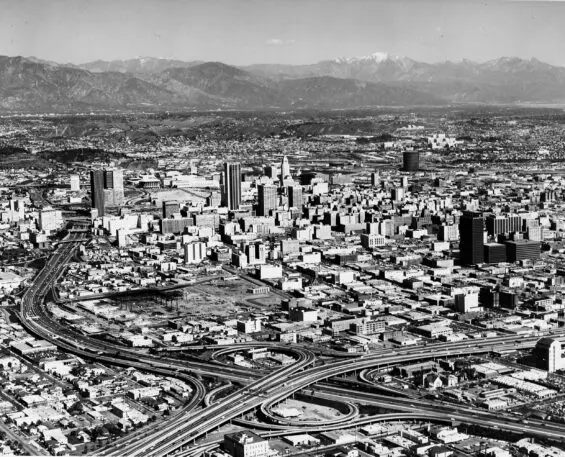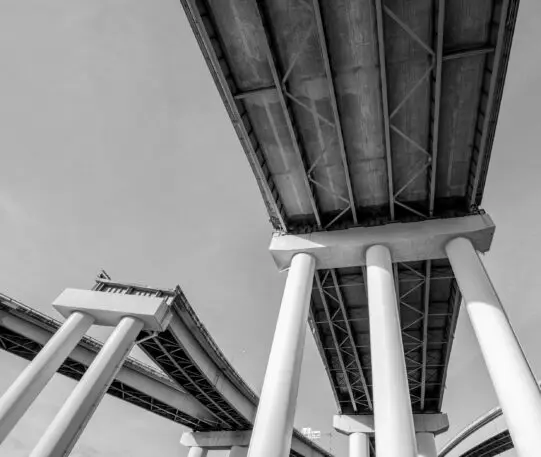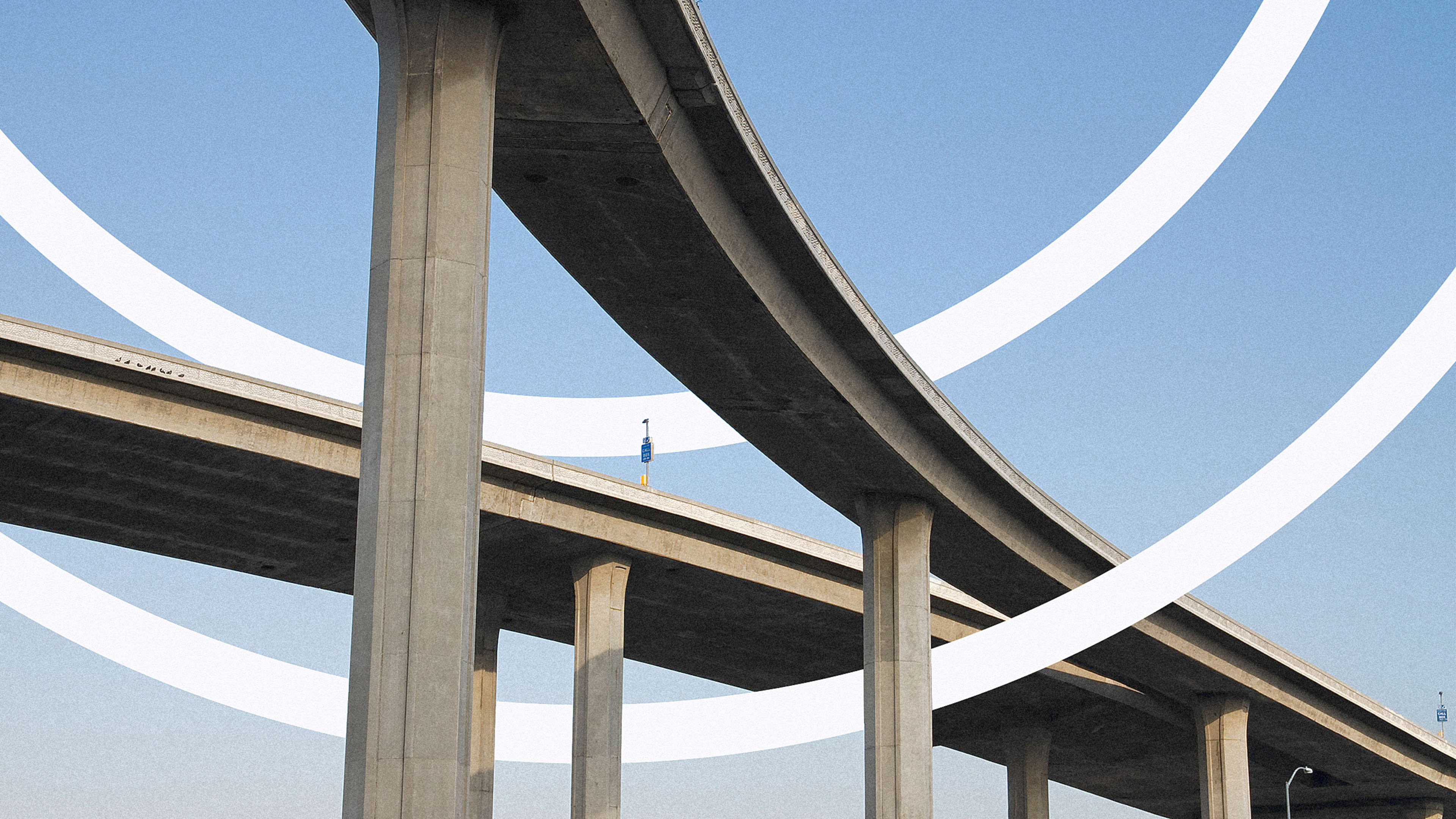The first freeway in Los Angeles, Interstate 10, was completed in 1935 at a cost of $877,000, about $14 million in today’s dollars. It was considered a triumph in traffic management and design, ushering in a new era of mobility that accelerated the region’s economic growth. It also had another impact: entrapping Ramona Gardens, a mostly Black community, in a constant flow of highly noxious emissions. Today, the 1,700 residents of Ramona Gardens suffer from dangerously high levels of respiratory disease, including twice the state average rate of childhood asthma.
There are countless examples of vulnerable populations decimated in the name of progress and expansion. From the 1950s through at least the 1970s, Black Bottom in Detroit, Magruder in Virginia, Hanford Village in New York, Hanford in Ohio, Overtown in Florida, and hundreds of other communities across the country were impacted. They were displaced, bulldozed, or forced into decline when President Dwight D. Eisenhower’s Interstate Highway System, among other public works, paved them over or boxed them in.

Connecting equity with infrastructure is not intuitive for most people. Diving into the topic, however, as President Joe Biden is doing through the introduction of the $2.3 trillion “American Jobs Plan,” reveals both a past that needs to be reckoned with, and an opportunity to create a more positive future.
Equitable infrastructure considers the short- and long-term impacts on human health and well-being, and takes shape based on input from all members of a community. Equitable infrastructure is, at its core, defined by the principle that everyone deserves a fair opportunity to thrive. Any effort that doesn’t prioritize the human impact at all levels can arguably be dismissed as discriminatory. And any infrastructure policy that doesn’t place equity at its center will fail to meet our society’s future needs.
Here are three reasons an equitable infrastructure is so critical:
Inequity lasts for generations
Infrastructure investments are built to last. Think about drinking water, delivered through pipes laid, for the most part, in the early to mid-1900s with an expected life span of 75 to 100 years. At the current replacement rate of about .5% a year, an entirely new water grid will take two centuries to install. In the meantime, approximately 6.1 million lead pipes are delivering often-contaminated water to homes and buildings. The human impacts of lead exposure are tragically evident in the mass illnesses of Flint, Michigan, residents and the cognitive deficiencies of their children.
Privilege can make inequity invisible
Unless they are wheelchair-bound or frequent pedestrians, people likely go about their daily lives without giving sidewalks much notice. Yet sidewalks are a surprisingly complicated hot-button issue in many cities, especially Southern ones. In Nashville residents were expected to pay for the construction and maintenance of sidewalks outside their property, which, unfortunately, resulted in widespread disrepair. Some neighborhoods, like Trimble Bottom, Nashville’s oldest Black community, didn’t have sidewalks until the 1970s, and even today many streets have sidewalks on just one side. Sidewalks are a critical resource to connect people to work, school, stores and each other, and limiting them results in preventable pedestrian deaths, as well as continued segregation of communities.
In a more modern example, Bronx-based electric vehicle drivers are basically out of luck when it comes to finding a charging station. Dubbed “charging station deserts,” BIPOC and lower-income communities are being ignored when it comes to driving cleaner. This is not only discriminatory but also compounds existing health issues. The Bronx, which has just 17 EV charging stations for its 1.4 million residents, also hosts the infamous “Asthma Alley,” where, similar to Ramona Gardens, hospitalizations for asthma are five times the national rate due to their proximity to four major highways.
According to the American Lung Association, low-income communities and communities of color, such as much of the population of the South Bronx, face disproportionate risks from air pollution and climate change.

The cost of inequity is higher than the cost of equity
Just as lack of access to affordable healthcare often ends up costing more, the long-term costs of inequitable infrastructure (maintenance, repairs, etc.) will far exceed potential up-front costs of an equitable approach. For example, tolls are often a barrier for low-income people who cannot afford the added cost of commuting to work, if they own a reliable automobile at all. The long-term result can be a lack of opportunities to earn a livable wage, perpetual underemployment, and dependency on government support, while employers suffer from a reduced pool of job candidates. Schools are another example: When they are built without thoughtful access, healthy air systems, and outdoor spaces, children’s ability to learn and grow is directly impacted.
Into the Future
While history cannot be undone, the opportunity to rebuild can fix and prevent similar issues in the future. Here are five ways equity must show up in future infrastructure spending:
- Include diverse representation on all projects: Research conducted in Los Angeles as part of an environmental justice project specifically focused on low-income and minority motorists to understand the impacts of tolls and how to relieve those impacts through mitigation or other offsets.
- Consider the outliers: While automated vehicles (AV) may seem inevitable in cities, what about rural areas? The Federal Highway Administration is currently undergoing comprehensive scenario planning to explore the impacts of AV deployment on rural populations.
- Give minority-owned businesses opportunities to compete: As part of the North Carolina Turnpike Authority’s extensive highway redesign, intended to afford access to outer parts of Raleigh, there is $70 million dedicated to providing opportunities for disadvantaged business enterprise construction companies.
- Prioritize nature-based solutions: At Ramona Gardens, the community trapped in smog from the traffic of the 10-lane freeway it borders, is building a nature park, including a “green wall” that filters the noxious air, to help protect residents.
- Learn from the past: Earlier this year, a proposed widening of the Houston Freeway (I-45) uncovered the outcome of entirely displacing a majority Black and Hispanic community. The information was utilized to halt the project, based on the Civil Rights Act. It is one of the first examples of reckoning with the past while addressing the future.
The bottom line: U.S. infrastructure is crumbling, dangerous, and inadequate to meet the needs of future generations. If fixed without examining road, bridge, electrification, and transportation systems through a lens of equity, it will continue to perpetuate disenfranchisement while ringing up prohibitive maintenance and repair costs. Rebuilding our infrastructure today is an opportunity to do it right this time—for everyone. Without equity, our infrastructure remains broken.
Denise Turner Roth is the president of Advisory Services, WSP USA.
Recognize your brand’s excellence by applying to this year’s Brands That Matter Awards before the early-rate deadline, May 3.
